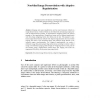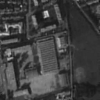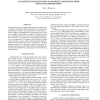8 search results - page 1 / 2 » Non-blind Image Deconvolution with Adaptive Regularization |
PCM
2010
Springer
13 years 2 months ago
2010
Springer
Ringing and noise amplification are the most dominant artifacts in image deconvolution. These artifacts can be reduced by introducing image prior into the deconvolution process. A ...
CVPR
2011
IEEE
12 years 12 months ago
2011
IEEE
Blind image deconvolution is an ill-posed problem that requires regularization to solve. However, many common forms of image prior used in this setting have a major drawback in th...
ICPR
2000
IEEE
14 years 5 months ago
2000
IEEE
The deconvolution of blurred and noisy satellite images is an ill-posed inverse problem, which can be regularized within a Bayesian context by using an a priori model of the recon...
ICPR
2006
IEEE
14 years 5 months ago
2006
IEEE
We present various kinds of variational PDE based methods to interpolate missing sinogram data for tomographic image reconstruction. Using the observed sinogram data we inpaint th...
ICIP
2005
IEEE
14 years 6 months ago
2005
IEEE
This paper proposes an original inhomogeneous restoration (deconvolution) model under the Bayesian framework. In this model, regularization is achieved, during the iterative resto...



